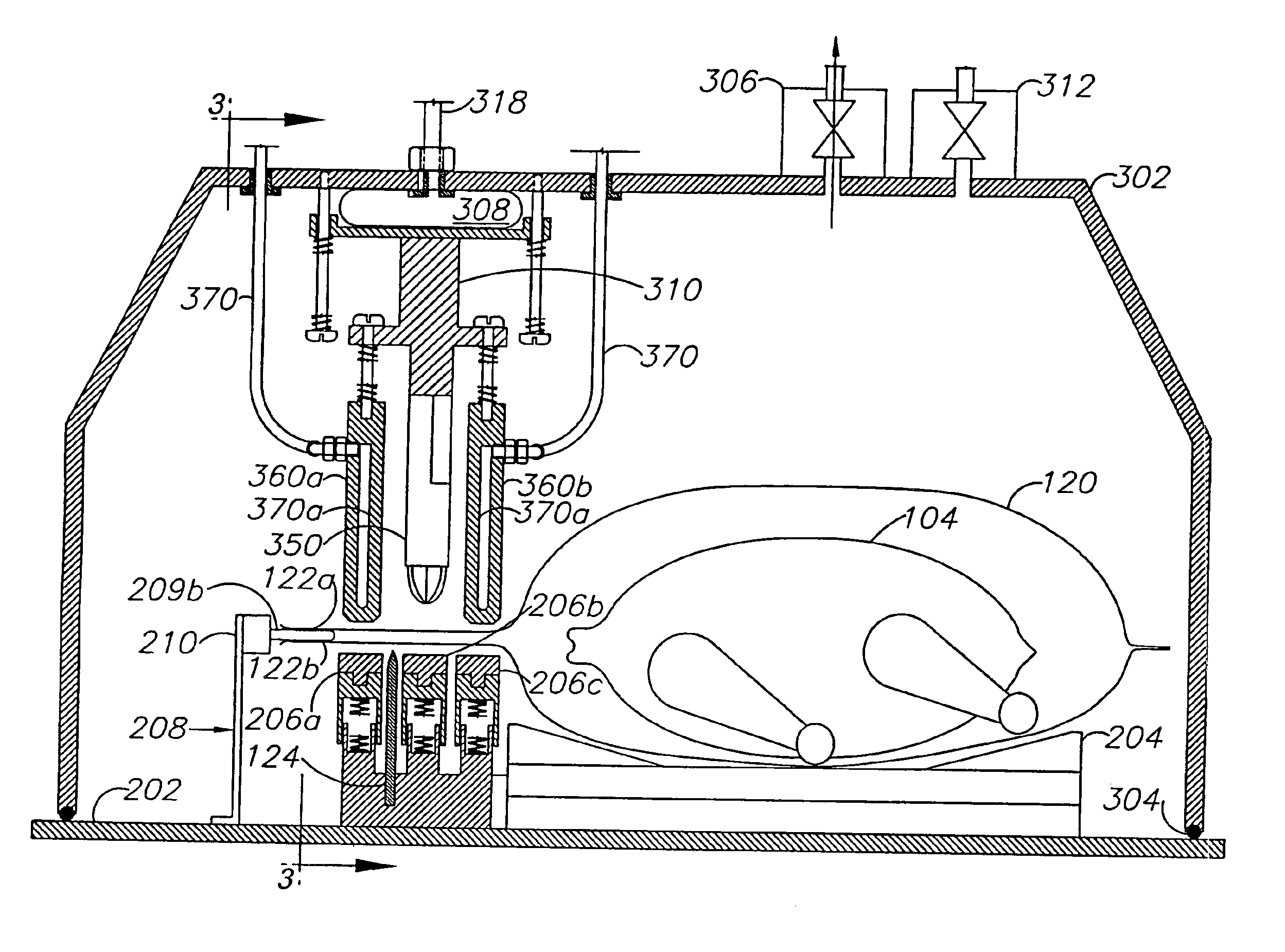Bag sealing system and method
a bag sealing and bag closure technology, applied in the field of vacuum packaging, can solve the problems of contaminating packaged food products, affecting the quality of packaged food products, and affecting the sealing effect of the bag, and achieve the effect of increasing the thermal mass and low failure ra
- Summary
- Abstract
- Description
- Claims
- Application Information
AI Technical Summary
Benefits of technology
Problems solved by technology
Method used
Image
Examples
Embodiment Construction
Turning to the figures, FIGS. 1a and 1b illustrate an automated multiple-chamber vacuum packaging machine 100. The machine includes a continuous, driven chain or belt 101 supported on and driven by an idler roller 102a and a drive roller 102b. As illustrated, a circuitous train of lower vacuum platens 200 are fastened at their leading edges to the belt 101. Preferably, the platens 200 are made of stainless steel. As illustrated in FIG. 1b, the platens are moving counterclockwise in a direction from right to left across the top. The belt 101 is driven by sprocket and bearing assemblies that are fixed to a drive shaft and a free wheeling shaft (not shown). The drive shaft is driven by a servo drive gear reduction motor 110. Three vacuum chambers 300 (individually denoted by numbers 300a, 300b and 300c) are mounted above the belt 101. The platens 200 and respective vacuum chambers 300 collectively form respective bag sealing units 106, which are capable of automated or semi-automated o...
PUM
| Property | Measurement | Unit |
|---|---|---|
| width | aaaaa | aaaaa |
| electrical resistance | aaaaa | aaaaa |
| vacuum chamber | aaaaa | aaaaa |
Abstract
Description
Claims
Application Information
 Login to View More
Login to View More - R&D
- Intellectual Property
- Life Sciences
- Materials
- Tech Scout
- Unparalleled Data Quality
- Higher Quality Content
- 60% Fewer Hallucinations
Browse by: Latest US Patents, China's latest patents, Technical Efficacy Thesaurus, Application Domain, Technology Topic, Popular Technical Reports.
© 2025 PatSnap. All rights reserved.Legal|Privacy policy|Modern Slavery Act Transparency Statement|Sitemap|About US| Contact US: help@patsnap.com



